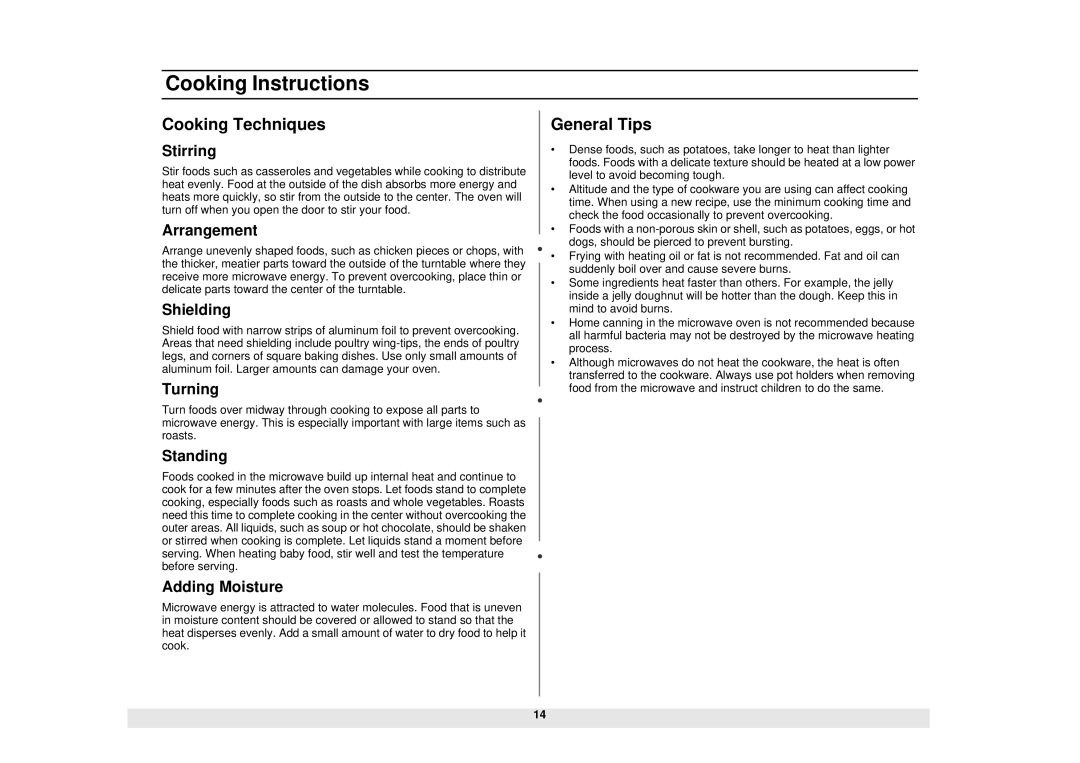MW620WA, MW610BA, MW630BA, MW620BA, MW610WA specifications
Samsung's MW series of microwaves, including the MW630WA, MW610WA, MW620BA, MW630BA, and MW610BA, are designed to provide efficient cooking solutions that blend advanced technology with user-friendly features. Each model showcases unique characteristics while sharing a core set of functionalities that enhance the cooking experience.Starting with the MW630WA, this model features a sleek stainless steel design that complements modern kitchens. It boasts a powerful 900-watt output, ensuring fast heating and cooking times. The MW630WA incorporates a ceramic enamel interior, making it easy to clean and resistant to bacteria. One of its standout features is the sensor cooking technology, which automatically adjusts cooking times and power levels for optimal cooking results, eliminating guesswork and enhancing convenience.
The MW610WA shares many attributes with the MW630WA but is designed for those who prefer a slightly more compact option. It maintains the 900-watt power output but offers a classic white finish that appeals to minimalist aesthetics. This model is perfect for smaller kitchens or as an additional appliance for quick meals and reheating.
The MW620BA, on the other hand, introduces a unique black design, providing a bold aesthetic for contemporary spaces. Like its counterparts, it provides 900 watts of power and includes a variety of preset cooking modes for different types of food, from popcorn to pizza. This versatility allows users to explore diverse cooking methods with ease.
The MW630BA combines the power of the MW630WA with additional features tailored for larger households. With a spacious interior, it is ideal for cooking larger dishes or multiple servings at once. The eco mode is a highlight, allowing users to save energy when the microwave is not in use, demonstrating Samsung's commitment to sustainability.
Lastly, the MW610BA completes the series with a balance of performance and efficiency. This model is equipped with traditional mechanical controls, catering to those who prefer straightforward operation. It offers essential functions without unnecessary complexity, making it user-friendly for all demographics, especially older adults.
Together, the Samsung MW630WA, MW610WA, MW620BA, MW630BA, and MW610BA microwaves showcase the brand's dedication to quality, innovation, and design. Each model delivers consistent performance with a focus on convenience, efficiency, and style, catering to a wide range of cooking needs. Whether for reheating leftovers, defrosting, or preparing quick meals, these microwaves embody Samsung's commitment to enhancing everyday cooking experiences.

